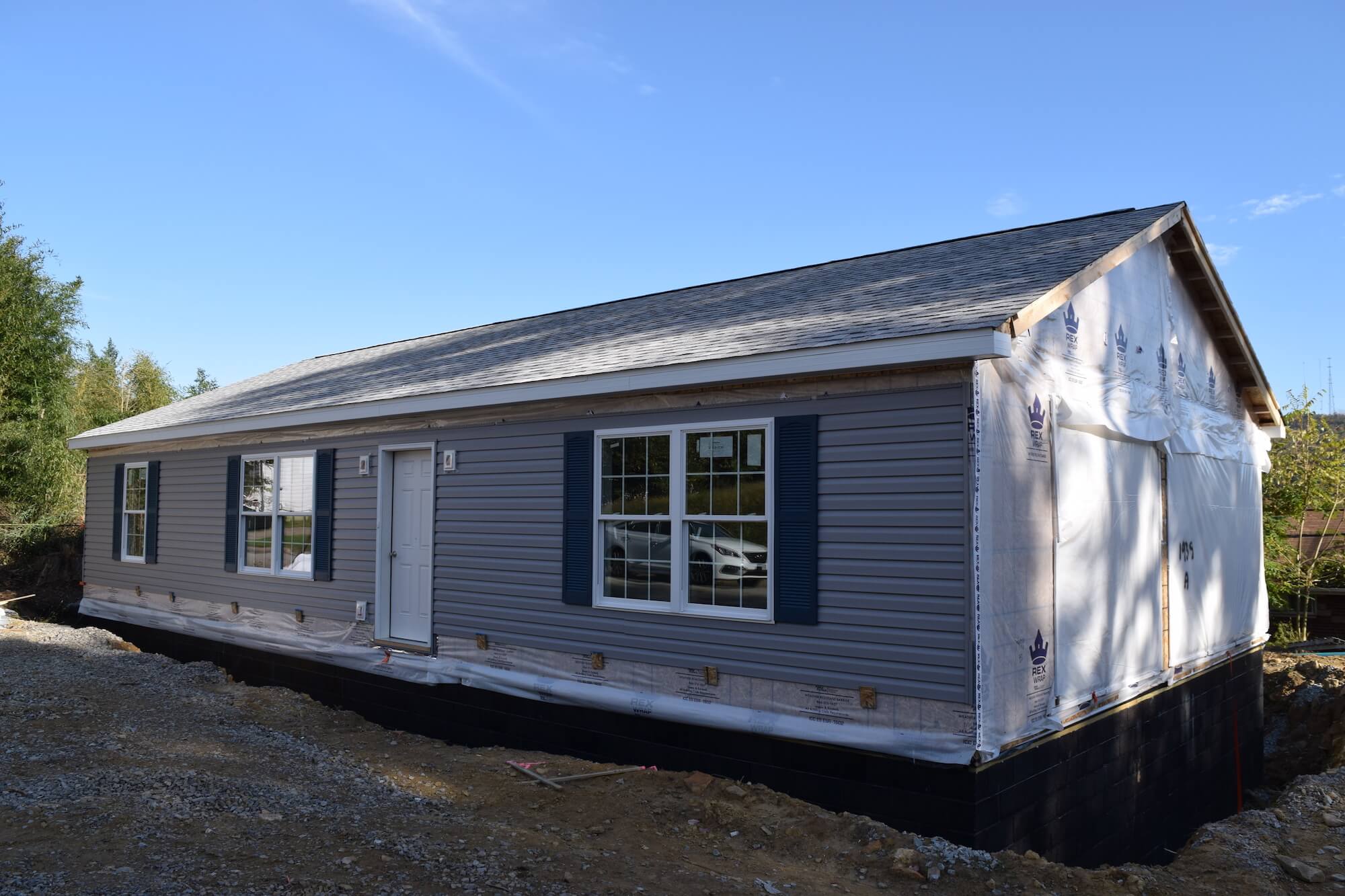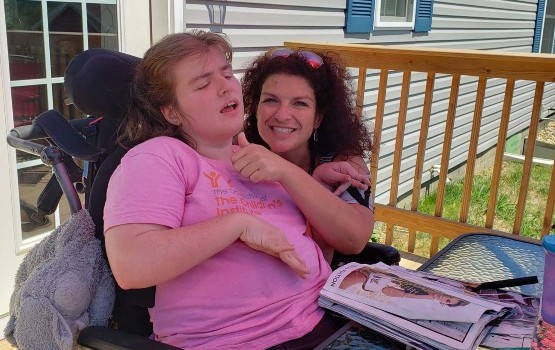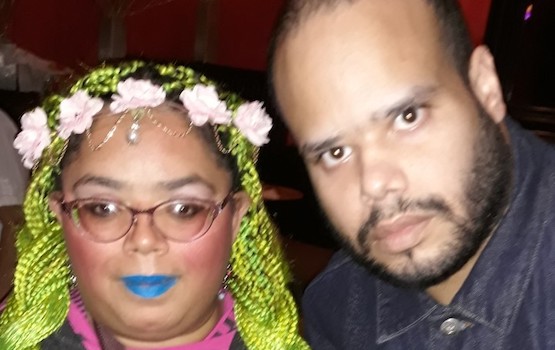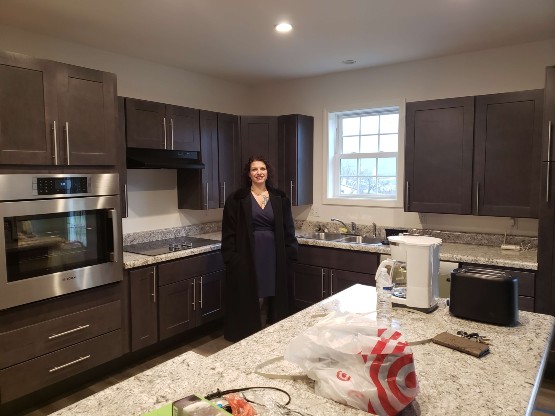Emily's Home: A New Vision of Accessibility
Becky and her daughter, Emily, drive down a street in Springdale, PA. Becky slows the car down as they approach a vacant, grassy lot.
“There it is! That’s where your house will be,” Becky tells Emily, pointing out the window. She waits for Emily to take a look before continuing to their home.
The lot isn’t so vacant anymore. The home that’s in its place is completely accessible, designed specifically for Emily—who has cerebral palsy and intellectual disability—by InVision Human Services in conjunction with Accessible Homes 4U and McCaffrey Development Corporation.
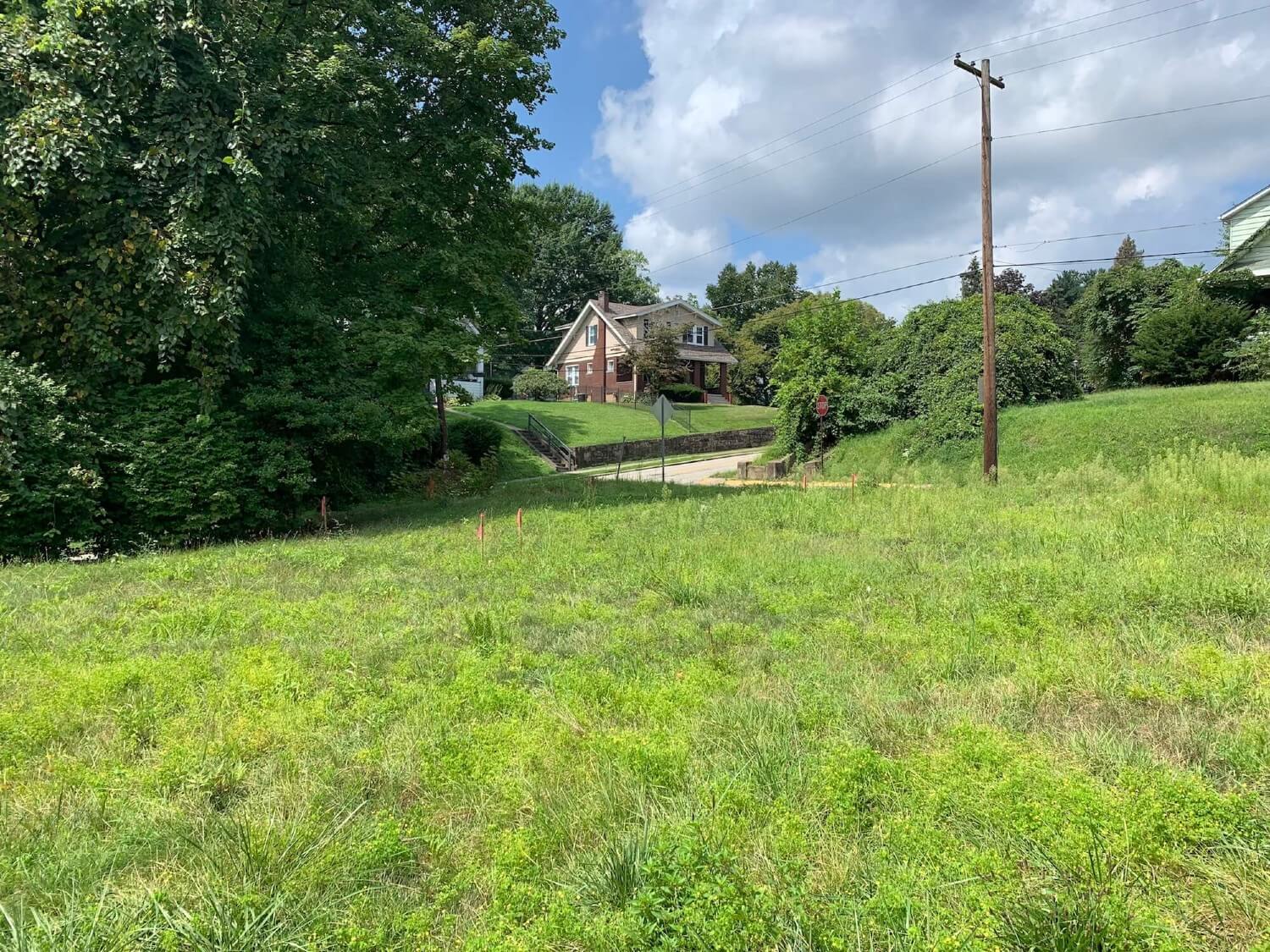
The Search Begins
Emily’s housing search began in 2016, when Becky was contemplating Emily’s future, reflecting on both her and her daughter’s ages.
“I wanted to secure her future,” Becky says. “I started realizing that I won’t be able to care for her forever, and you just never know what can happen in a day.”
Becky worried that if something happens to her, now or in the future, she would no longer be able to take care of Emily, and it drove her decision to begin considering moving Emily into a more independent lifestyle.
Emily participates in a day program, but she lacks much of the social interaction that she experienced when she was still a student at the Children’s Institute. Becky arranged for a home health aide to assist in her daughter’s care, but they’re inconsistently staffed and aren’t able to take Emily out into the community.
“My work schedule makes it basically impossible for me to be there for Emily to get her out and about. [She’s] very social, but she also likes her alone time.”
This contrast in behavior put Becky in a tough spot: While Emily does like to talk with others, and enjoys spending time in her community, too much interaction or stimulation can become harmful to her. Becky explored group homes, seeking a solution that would address her daughter’s need for both interaction and solitude while also providing consistent staff that would respect and value her.
Yet, many group homes place their focus on shared responsibilities and schedules, so with each home she toured, the more she accepted that they weren’t for Emily.
“Emily has anxiety, and she’s easily affected by her peers’ emotions or actions, sometimes to the point of self-injury,” Becky says. “[Individual homes] was why I pursued InVision Human Services.”
InVision’s philosophy on community living promotes independence and freedom for our residents. We work directly with the people we support and their families to outline their visions of successful lives.
For Emily, Becky knew transitioning her into her own home would be the best choice for her well-being. Reassured by our philosophies on care and support, she chose InVision.
“She’s 23, and she does need her own space,” Becky says. “I’m extremely excited for this opportunity.”
Emily’s journey didn’t begin with this new home. Becky expected the two of them to be brought into InVision’s typical process of home placement, starting with a basic home search in their desired neighborhood.
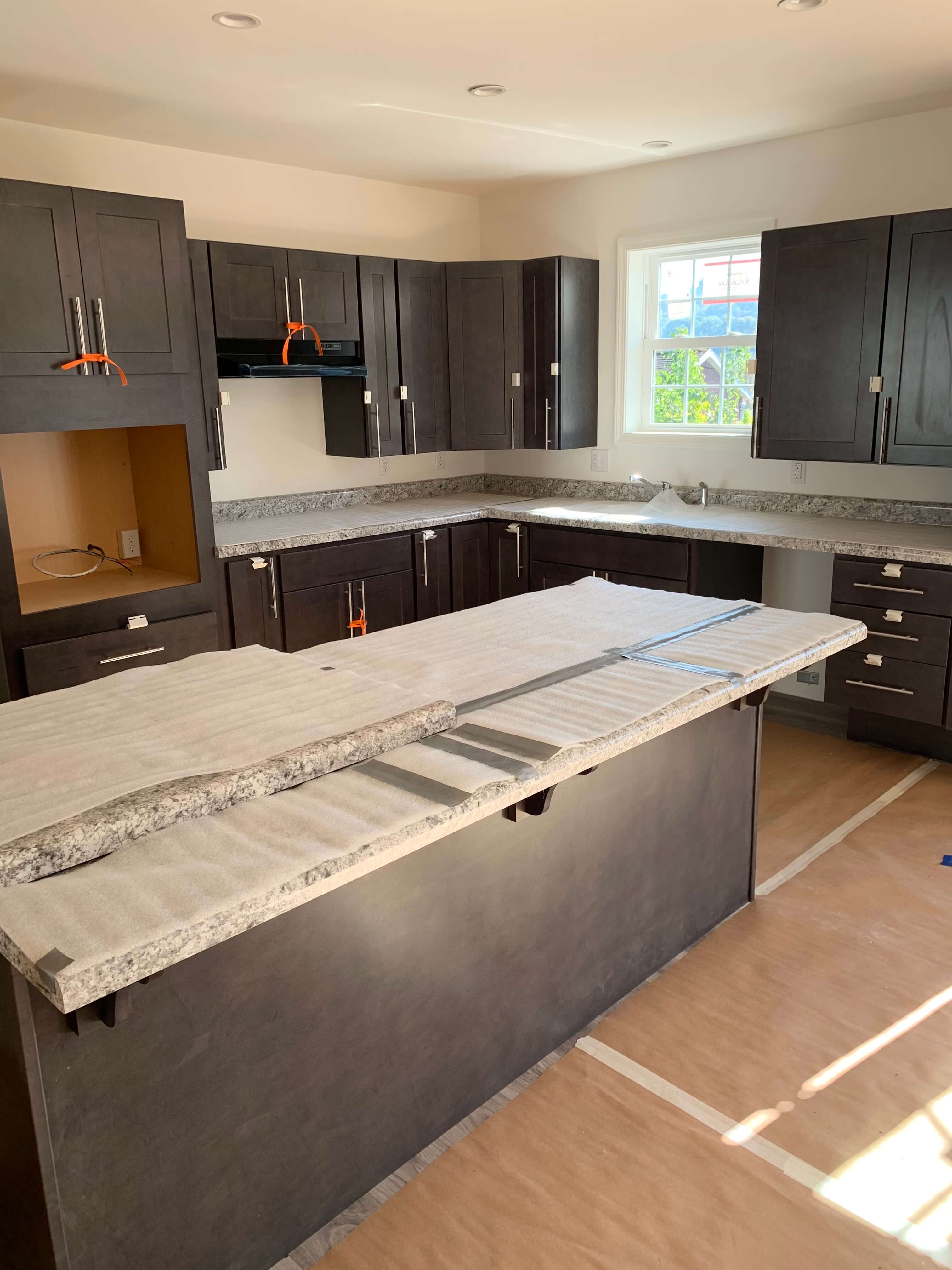
It’s not a short process, and it’s not always easy finding a suitable property for the people we support. We look for properties that will meet their needs, often focusing on mobility, especially for people like Emily who use a wheelchair. Staircases are broadly inaccessible, so it’s often a deal-breaker for many of the homes. Yet even single-story homes become inaccessible based on features like narrow doors and halls or bathrooms.
Many of the roadblocks InVision encountered in our search for Emily’s new home stemmed from a lack of accessible properties. Ranch-style homes are not typically on the market, and geographically, level elevation is found few and far between.
Becky has gone to incredible lengths to modify their home to make it accessible for her daughter, including adding a wheelchair ramp on the outside of the home, but it’s becoming increasingly difficult for her to properly care for her daughter, even with the renovations. These projects can be expensive, and she relied on grants to help with the costs.
InVision’s not ignorant to these challenges either. We consistently invest in home renovations or rental property modifications to meet the evolving needs of the people we support. Oftentimes, however, the necessary modifications can’t be made due to structural or environmental issues.
After two years of dead ends in the home and rental market, we decided to explore an entirely new approach that offered greater independence and accessibility for Emily. This method gave us, Emily, and Becky complete freedom in deciding what features would exist inside and outside the home. Becky never expected the journey she would take, or the pathway she’s helping to forge for her daughter and others like her.
A New Vision
Becky greeted the idea with palpable enthusiasm. She told us she was excited and honored to be a pioneer in a project that has the implication to help so many other people like her daughter benefit from independent living.
InVision entered an exploratory period with Becky and Emily. We consulted with Accessible Homes 4U, a business that creates custom housing solutions for people of all abilities, and Mark Berton, an architect experienced in designing accessible homes.
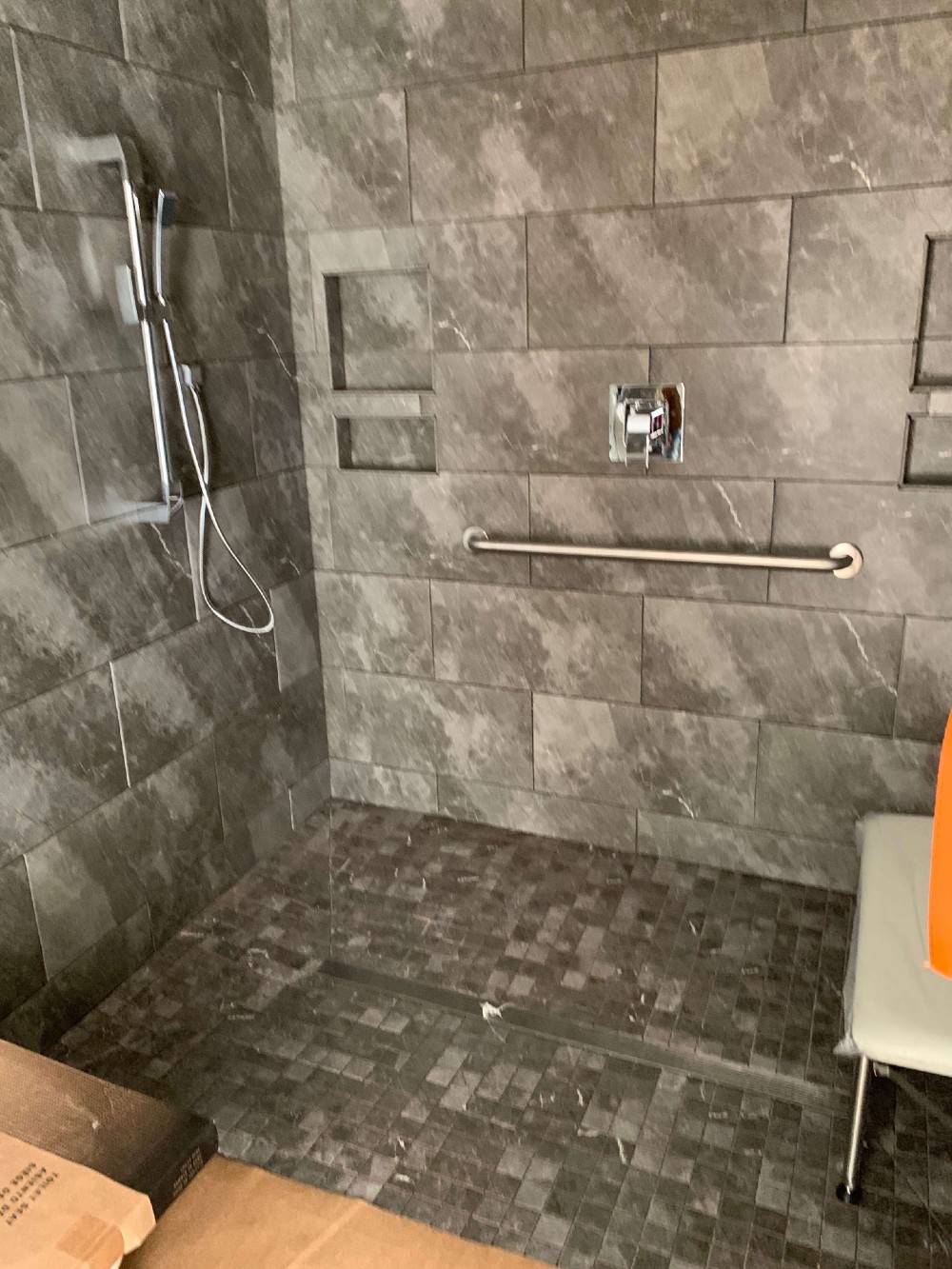
Our collaborative process created a list of accessible features for the home that could be standardized into a template for future use. This included 36” wide doors; a wet room; wheelchair-height cabinets, sinks, kitchen appliances, and more with room for wheelchair maneuvering; zero-barrier thresholds; and much more. Becky narrowed down the list to include only features that Emily would need, but the exclusion of features like automatic doors or other accessible appliances are easy to add for any future tenants who may need them.
In January 2019, Lucy, InVision’s real estate agent and consultant with Accessible Homes 4U, gave us a call to say she identified a potential lot in Becky’s preferred neighborhood for Emily. Miraculous for hilly western Pennsylvania, our assessment showed the lot was level enough to support a modular home and would be perfect for integrating accessibility.
This accessible home became a part of our mission to integrate the people we support into their communities by seamlessly melding the home’s accessible features into modern aesthetic. The home is not designed to draw attention to its accessibility, but rather frames its design as completely natural. For example, the home doesn’t have a ramp outside the home for wheelchair accessibility; instead, the walkway gradually elevates to the front door without the wrap-around effect of typical ramps.
Working with McCaffrey Development Corporation, our architect, and Accessible Homes 4U, we designed modules that would accommodate our accessibility features while at the same time be easy to reproduce. This template, designed with input from Becky and Emily, creates a standard for future homes built by InVision for the people we support, allowing them the same level of customization and personalization as they seek a more independent life.
Building customized homes for the people we support has opened up new possibilities for people with disabilities wanting to live in their own homes. When remodeling isn’t an option, we now have a viable alternative in place for people who struggle to find the right home that will fit their needs, like Emily.
Nearing Completion
It’s a sunny September afternoon, and Becky and Emily drive past the lot again.
“Look! The foundation is all done,” Becky says aloud. She’s been receiving updates about the progress from InVision, but there’s just something different about seeing it in person.
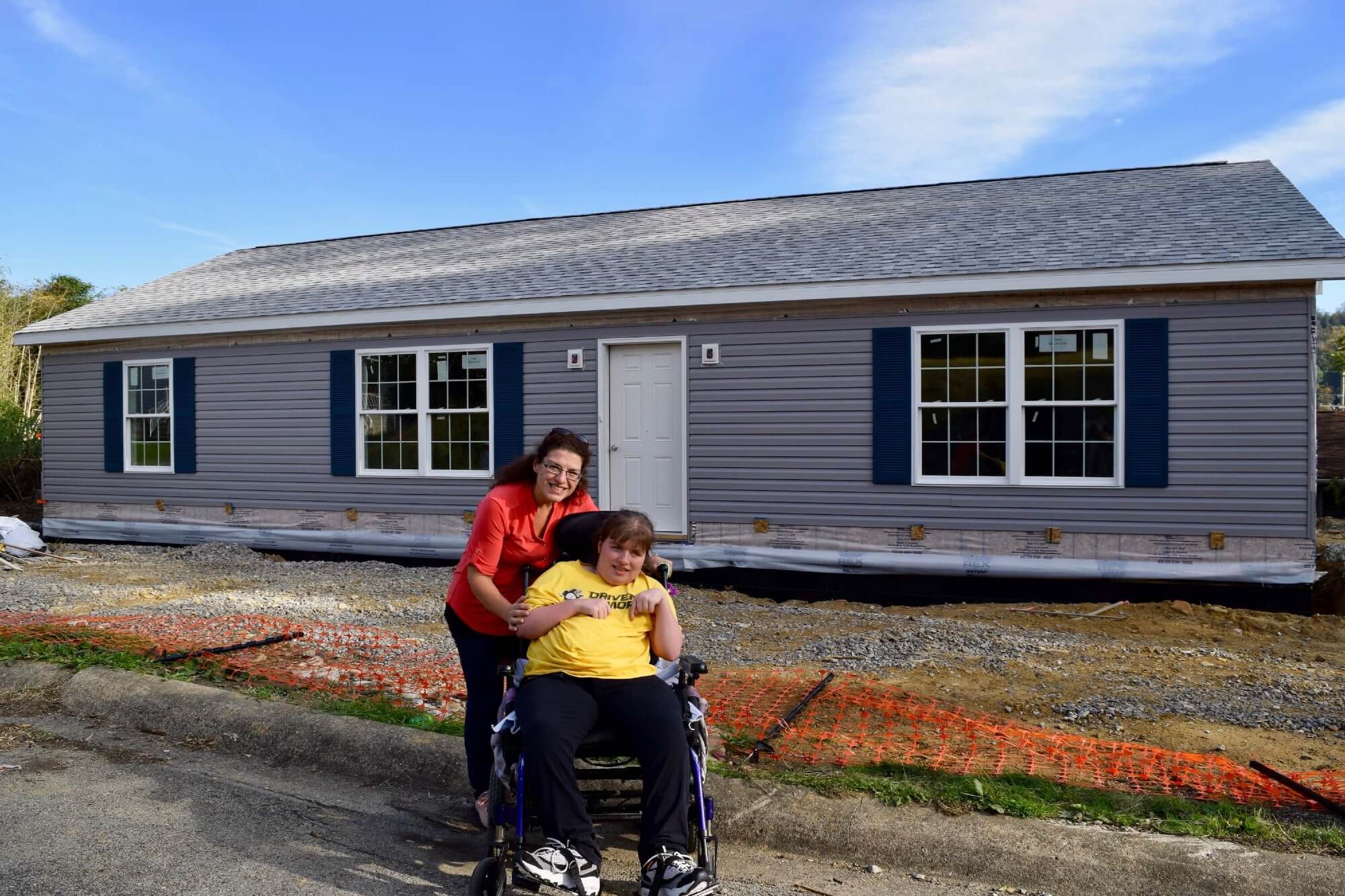
Emily’s future residence is only 15 minutes away from her current house by car. Becky settled on a nearby neighborhood to lessen the impact of change for Emily, but she also likes having her close by for visits.
Becky looks at the home site for a few more seconds before continuing down the street, eager for the home’s completion and Emily’s step into a more independent life.
McCaffrey placed the home modules on October 21. Once construction is complete, Becky and Emily will work with us to furnish the home exactly as they want, adding the finishing touches to make it truly Emily’s home.
